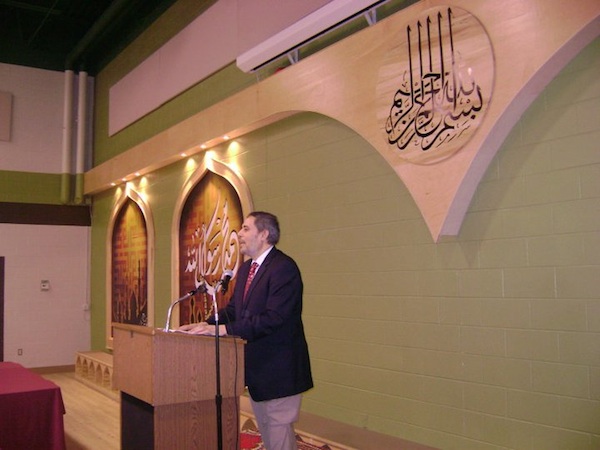
Ten Years Later: The Impacts of 9/11 on Michigan Communities
By Matthew Stiffler, Arab American National Museum
In preparation for the tenth anniversary of the tragic events of September 11, 2001, the Arab American National Museum (AANM), with funding from the John S. and James L. Knight Foundation, has been engaged in a community-led, multi-city project. “Ten Years Later: The Impacts of 9/11 on Michigan Communities” is the only grassroots investigation of the post-9/11 period in Michigan to date, and is focused on the creative responses of Arab Americans as well as the injustices suffered by the community and the bridges that have been built with non-Arab communities and organizations. By engaging communities in a participatory process, through community meetings and the collection of individual stories, the Arab American National Museum and its community partners in five cities are documenting the collective experience of Michigan’s Arab American, Muslim, and Arabic-speaking Christian communities post-9/11.
We have already held successful community meetings in Dearborn, Lansing, and Flint, and have had planning meetings in Grand Rapids and Kalamazoo. Throughout 2011 and 2012, we will continue to have as many community meetings as possible, trying to capture the vast diversity of the Arab, Muslim, and Arabic-speaking communities in Michigan. The goal of the community meetings is to provide a safe space to share experiences of the last decade, and to be a constructive space where, in addition to documenting past injustices, we explore options and hopes for the future. To help participants feel free to share honestly, there is no audio or video recording during the meetings. We have found that in some of the Arab American communities in the state, there is a reluctance to become politically active, and even talking publically about the effects of 9/11 can be seen as a potentially risky endeavor by Arab immigrants. Willing participants may be interviewed at a later date if they wish to share a compelling story with us for inclusion in the Museum’s oral history collection, but the space of the community meetings is reserved for open discussion.
In order to achieve the goals of this project, the Arab American National Museum is relying heavily on our community partners. Our community partners are business owners, organizers, activists, academics, and religious leaders. They are immigrants, second- and third-generation Arab Americans, native Arabic speakers, and represent at least seven different Arab world countries, all reflecting the diversity of the Arab American community. Below is a partial list of our partners who have been instrumental in making this project a success:
- Mona Sahouri of the Arab American Heritage Council in Flint
- Abed Khirfan of the Flint Islamic Center
- George Nassif, a retired educator in Flint
- Prof. Salah Hassan and Prof. Rosina Hassoun at Michigan State University
- Dr. Mahmoud Mousa and Dr. Mohamed Elnabtity of the Islamic Center of East Lansing
- Farida Khoury and Rouba Samman of the American Syrian Arab Cultural Association in Troy
- Rasheed Alnozili of the Yemeni American News in Dearborn
- Ron Amen, Community and Economic Development Director for Dearborn Heights
- Prof. Majd Al-Mallah at Grand Valley State University
- Nidal Kanaan and Karen Henry of the Grand Rapids organization Healing Children of Conflict
- Shadia Kanaan, peace activist in Kalamazoo
- Prof. Said Abubakr of Western Michigan University
In the coming months, we will update this blog with summaries of community meetings and compelling narratives that highlight the diverse impacts that 9/11 has had on the Arab American communities in Michigan.
Recent Content
-
Artsarticle ·
-
Artsarticle ·
-
Artsarticle ·

